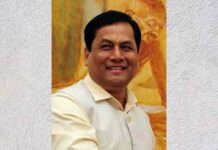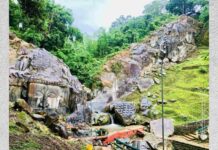Revolution Day is observed annually on October 20 in Guatemala. It commemorates a turning point in the history of the nation: a democratic uprising that occurred on this date in 1944 overthrew military dictator Jorge Ubico’s ten years of oppressive rule. Who designed the revolutionary system? Workers, students, and instructors. They arose and reached a consensus that was sufficient. These valiant demonstrators fought for freedom, their right to free religion and speech, and emancipation from debilitating fear and want. Revolution Day paved the way for human rights activism and constructive reform in Guatemalan politics and society.
The background of Revolution Day
For the majority of its history, Guatemala has been governed by unpopular dictators in succession. The nation experienced significant turmoil during the reign of Jorge Ubico in 1944. Ubico drew inspiration for his policies from Adolf Hitler and Napoleon Bonaparte. Anger toward Ubico had increased as time passed. During the spring of that year, there was an atmosphere of revolution and change.
Students, employees, and educators united in opposition to Ubico’s authority, seizing control. In one of the initial demonstrations of opposition, educators from Guatemala declined to partake in the yearly Teachers Day Parade that was slated to transpire on June 30. They demanded wage increases and improved working conditions. Hundreds of workers congregated in Guatemala City in solidarity to engage in a nonviolent protest prior to the parade. How did the government react? A military assault that resulted in the deaths of 200 individuals. The response to this unprovoked assault was a nationwide strike. The common populace ceased to accept Ubico’s governance. Power was transferred from the dictator to his generals. The military junta, under the leadership of Federico Ponce Vaides, succeeded Ubico and persisted in implementing his repressive policies.
The pivotal moment occurred on October 1, when the prominent anti-government journalist Alejandro Cordova was murdered. An already enraged populace, the incident bolstered their determination to rise up in greater numbers than ever before. With the assistance of a military officer named Jacobo rbenz, the Guatemalan people executed the junta during the October Revolution, also known as a military coup.
Subsequently, the rebellion demanded open and free elections. In response, the Guatemalan people voted for philosophy professor and advocate for progressive social reforms Juan Jose Arevalo. Arevalo secured a decisive landslide victory. His numerous labor and agricultural reforms contributed to the economic growth of the nation.
Sŵn Festival 2023: Date, History, Activities, Facts about Music Festivals
Talent Transformation Day 2023: Date, History, Activities, Facts about Future of Work
World CRISPR Day 2023: Date, History, Facts about CRISPR
Five facts about Guatemala City
An approximate population of 3.7 million individuals resides in Guatemala City.
Once, the weak soil and pumice from the volcano formed a sinkhole in the city, which engulfed a three-story home.
The capital of Guatemala was designated due to its comparatively lower susceptibility to earthquakes in comparison to other regions.
Similar to snow days, volcanic activity and the resulting debris force people to remain indoors.
During that period, Che Guevara was profoundly impacted in his ideological development.
REVOLUTION DAY (GUATEMALA) DATES
| Year | Date | Day |
|---|---|---|
| 2023 | October 20 | Friday |
| 2024 | October 20 | Sunday |
| 2025 | October 20 | Monday |
| 2026 | October 20 | Tuesday |
| 2027 | October 20 | Wednesday |




